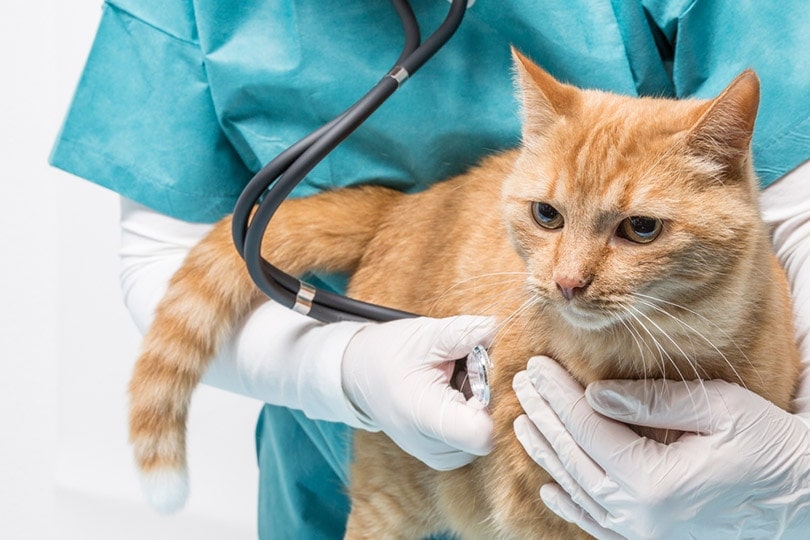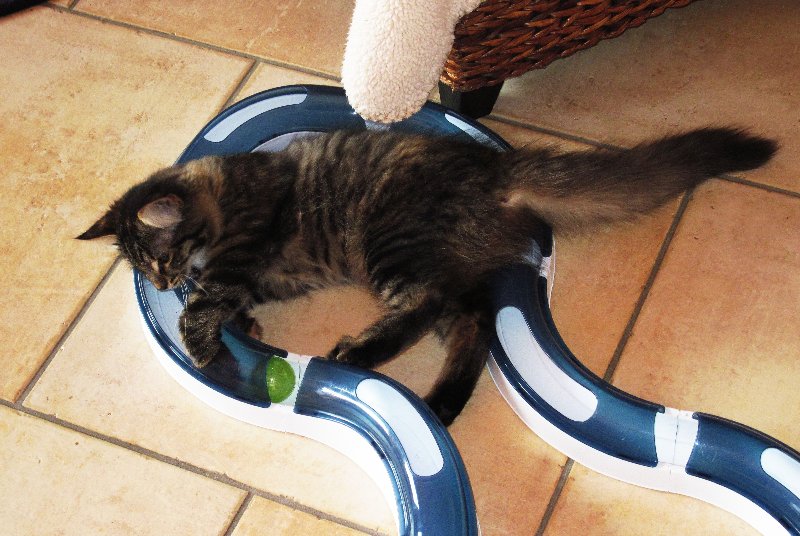9 Cat Breeds with Curled Ears (With Pictures)

Updated on
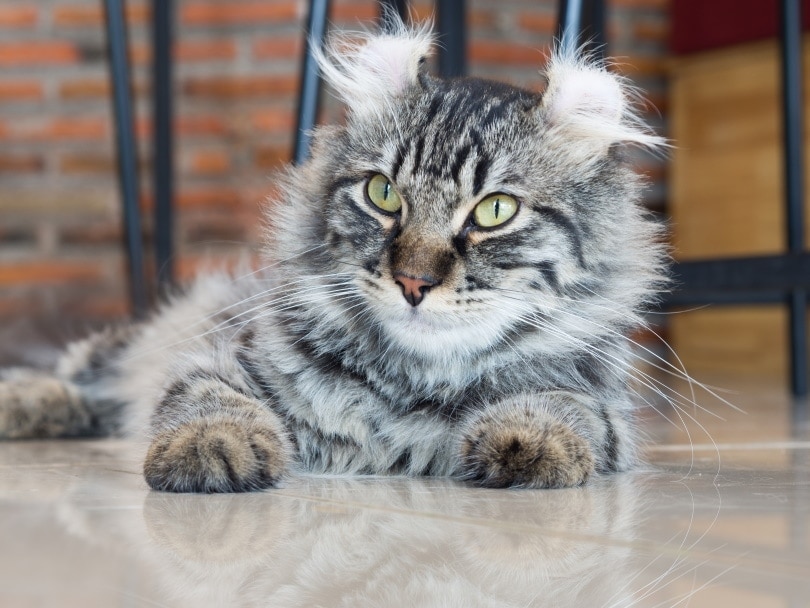
There are dozens of different breeds of cat species recognized by cat fancier associations around the world, and dozens more that are hybrids of other breeds or breeds that are still in development. As such, and thanks to the wonders of genetics, many different features can be found among cat breeds. Curled ears are one such feature: they are uncommon, but folded or curled ears can be seen in several different breeds as well as in some mixed-breed cats.
Below, we look at nine cat breeds with curled ears to help you find one that might make the ideal pet for your family.
The 9 Cat Breeds with Curled Ears
1. American Curl
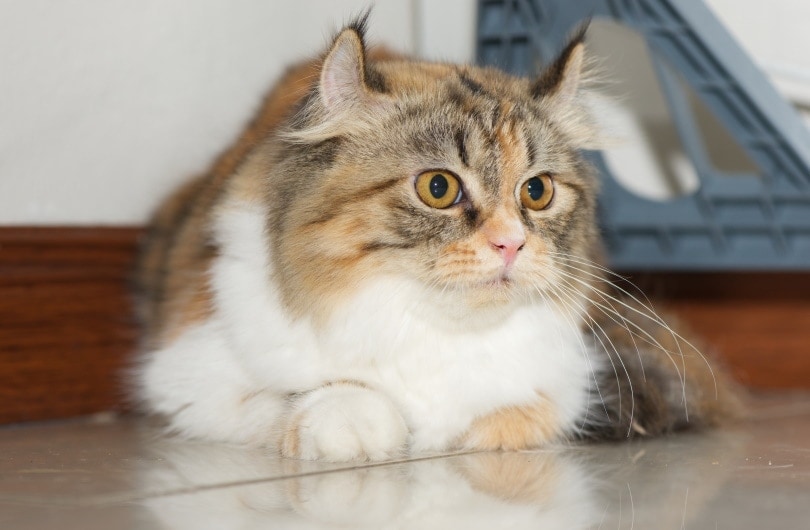
| Size: | 8–12 pounds |
| Lifespan: | 9–13 years |
The American Curl is an obvious starting point when looking for cats with curled ears. It is a muscular breed with a relatively long body. Their coats can come in many colors and patterns, but to be considered a true American Curl they must have folded ears that curl backward. The breed is friendly and playful—they enjoy spending time near their humans, although not necessarily curled up on laps. They enjoy spending time outdoors when possible.
If yours doesn’t go outside, you will want to provide cat trees and other forms of physical exercise and mental stimulation.
2. Dwelf Cat

| Size: | 4–9 pounds |
| Lifespan: | 12–15 years |
The Dwelf Cat has a ton of unique, outstanding features. The Dwelf is an amalgamation of Dwarf and Elf breeds and was created by crossing the Munchkin, the Sphynx, and the American Curl, and it takes features from all of these breeds. The short legs of the breed mean that it will only grow to about half the height of other cats, thanks to the Munchkin genetics. It is hairless, like the Sphynx, and it has ears that curl backward thanks to the American Curl.
It is a new breed and is not recognized by a lot of fanciers’ associations yet. They are loving, friendly, and intelligent. They are also sociable and enjoy exercise and mental stimulation.
3. Elf Cat
| Size: | 10–15 pounds |
| Lifespan: | 8–14 years |
The Elf Cat is a mixture of the Sphynx and American Curl, so it is similar to the Dwelf cat except without the shorter legs of the Munchkin. It is hairless like the Sphynx, however, and it has ears that curl backward due to the introduction of American Curl genes. It is a new breed, having only existed for less than 20 years, which means that not too much is known about the Elf Cat. However, owners and breeders claim it is friendly and loving and enjoys playtime.
It is a demanding cat that will want a lot of attention, so it may not be the best option for owners looking for an independent feline.
4. Foldex
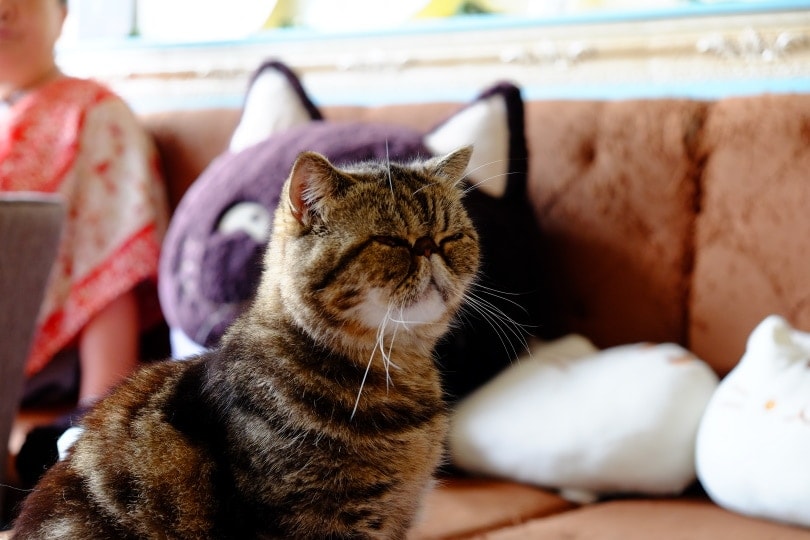
| Size: | 6–14 pounds |
| Lifespan: | 12–15 years |
The Foldex breed has been around a little longer than the Elf and Dwelf breeds, but only since the 1990s when it was bred in Canada by crossing the Exotic Shorthair with the Scottish Fold. They are recognized by the Canadian Cat Association but not by other fanciers’ associations so can be difficult to find outside Canada. They are inquisitive, friendly, and cheerful little cats.
It is a medium-sized cat with a muscular build and the Foldex can come in any coat color or pattern. It can also have any coat length, which means that grooming requirements can vary from one Foldex to the next.
5. Highlander
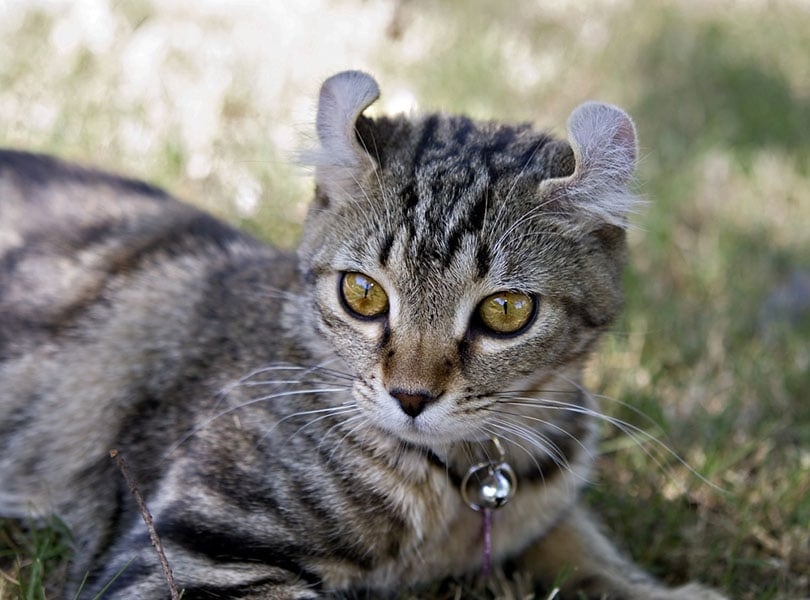
| Size: | 10–20 pounds |
| Lifespan: | 10–15 years |
The Highlander is another new breed. It was developed by crossing the Desert Lynx and Jungle Curl cats. It was originally called the Highlander Lynx when it was first introduced in the 1990s, but this has since been shortened and is now just called the Highlander. The Highlander is not recognized by any fanciers’ associations, but it is an affectionate, playful, and generally pleasant cat. It was developed to have the appearance of wild cat breeds, and although the breed may come in any color, it is most commonly seen with wild-type markings.
Their ears are slightly curled at the top so the curl isn’t as prominent as in some other breeds, but it is there.
6. Kinkalow
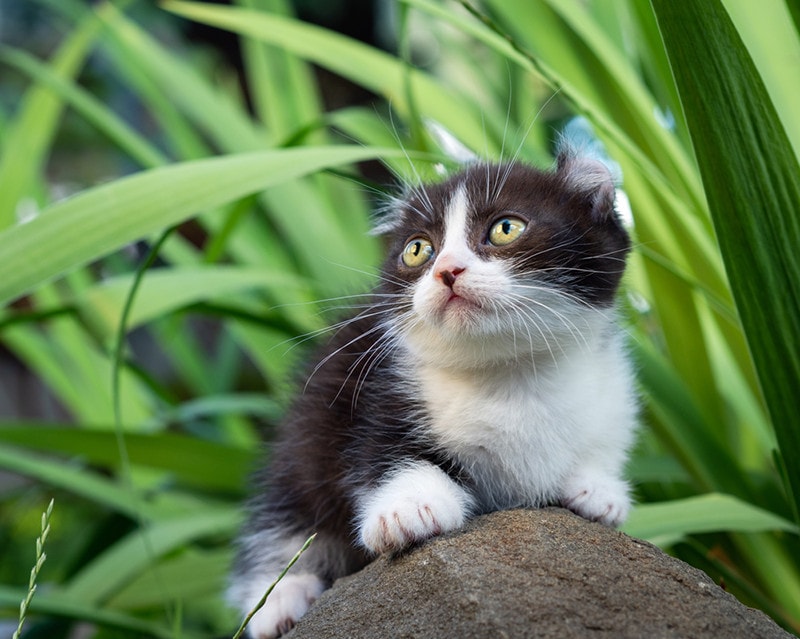
| Size: | 3–7 pounds |
| Lifespan: | 12–15 years |
The Kinkalow combines the Munchkin and the American Curl, which means they have short legs and curled ears. They are affectionate cats that will get along with just about everybody. They are also reasonably energetic and lively, although their short legs may limit the type of activities they can undertake.
Their ears are curled, rather than fully folded, and they have a very soft coat that invites attention.
7. Munchkin
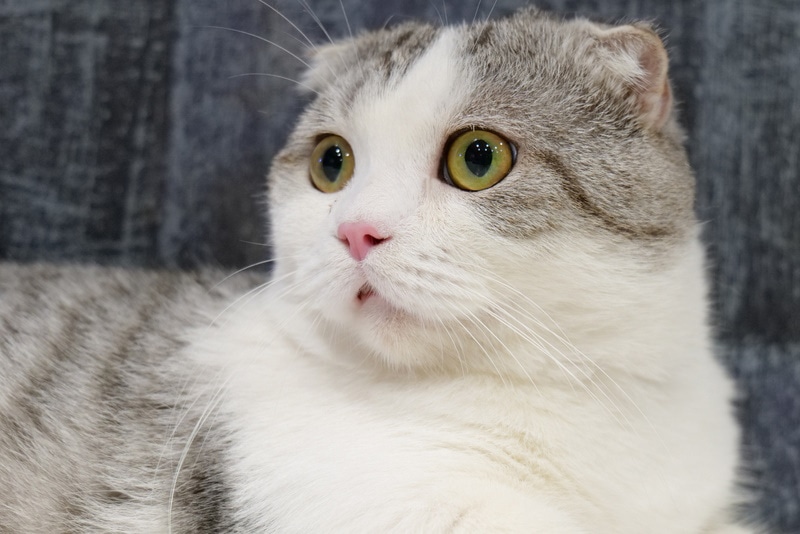
| Size: | 5–9 pounds |
| Lifespan: | 12–15 years |
The obvious feature of the Munchkin cat breed is its short legs, which give the cat a short, squat appearance, but many examples of this breed also have a slight kink in their ear. The Munchkin’s legs do mean that this breed moves differently and may be slightly more impeded in its movement than other cats. But it is also a friendly and loving breed that will do well with all family members.
8. Scottish Fold
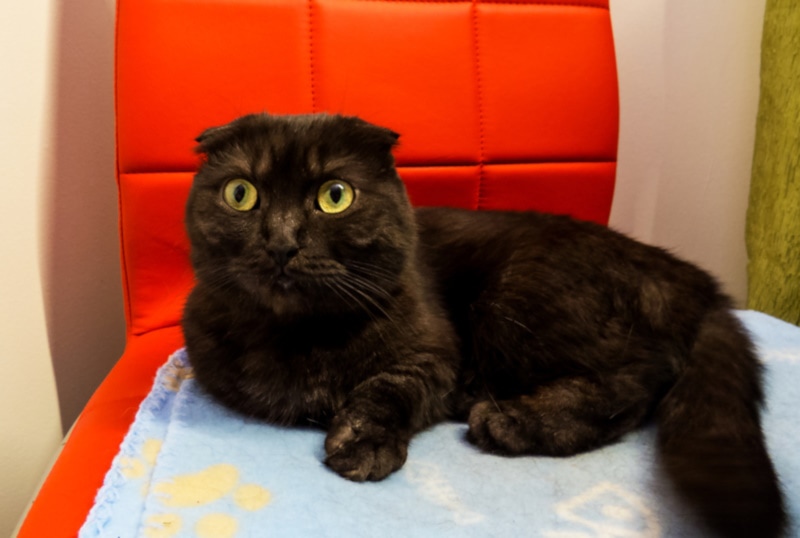
| Size: | 5–13 pounds |
| Lifespan: | 11–15 years |
The Scottish Fold is one of the best-known cats with folded ears, thanks partially to its name but also the fact that it is used to breed hybrids and other breeds with folds. It is a medium-sized cat that has a rounded appearance. Their ears are folded forwards, rather than backward, and they have a very luxurious coat that is soft to the touch.
They make great family pets because they can be left for a few hours at a time and are fairly independent, although do like attention and enjoy spending time with humans.
9. Ukrainian Levkoy
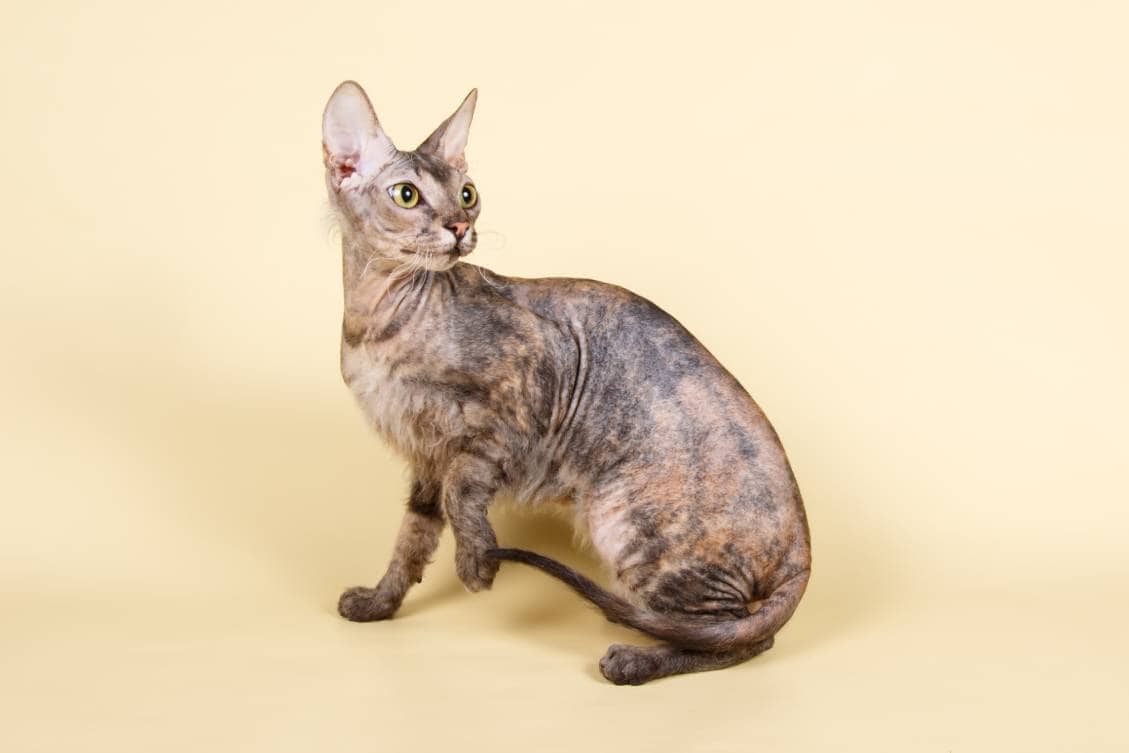
| Size: | 8–12 pounds |
| Lifespan: | 12–15 years |
The Ukrainian Levkoy is a unique and easily identifiable cat, but it is unlikely you will have seen one because it is a very rare breed, especially outside the Ukraine. Although it appears hairless, the Levkoy has a downy fur covering its body. Its ears fold forward slightly, and the breed has giant eyes. It is a very affectionate cat that enjoys a lot of attention and will reward owners with extensive hugs.
Levkoys can suffer separation anxiety as a result of their need for human attention, but the breed will affectionately greet just about anybody.
Do Curled Ears Affect Cats’ Health?
Unfortunately, in some breeds, the genes that cause the folded ears can also cause considerable joint and cartilage problems that lead to lifelong pain. This is especially common in Scottish Fold cats and more common in those that get the folded ear gene from both parents.
Do They Need Any Special Care?
Folded or curled ears themselves do not typically require any more care than normal ears, but because cats with these ears can be prone to joint problems, this may mean greater care requirements. Also, many of the breeds listed above have short legs or are hairless and both of these features require extra care from owners.
Conclusion
Cats with curled ears, or folded ears, are not as uncommon as you might think. The Scottish Fold and American Curl are likely the two most recognizable and common of the species that have this unique genetic feature, but there are many others, including some that are still considered to be in development.
Unfortunately, the genes that cause this unique trait can also lead to joint and cartilage problems that cause pain in cats, and some are calling for the breeding of these cats to be discouraged or even banned.
Featured Image Credit: paikong, Shutterstock


